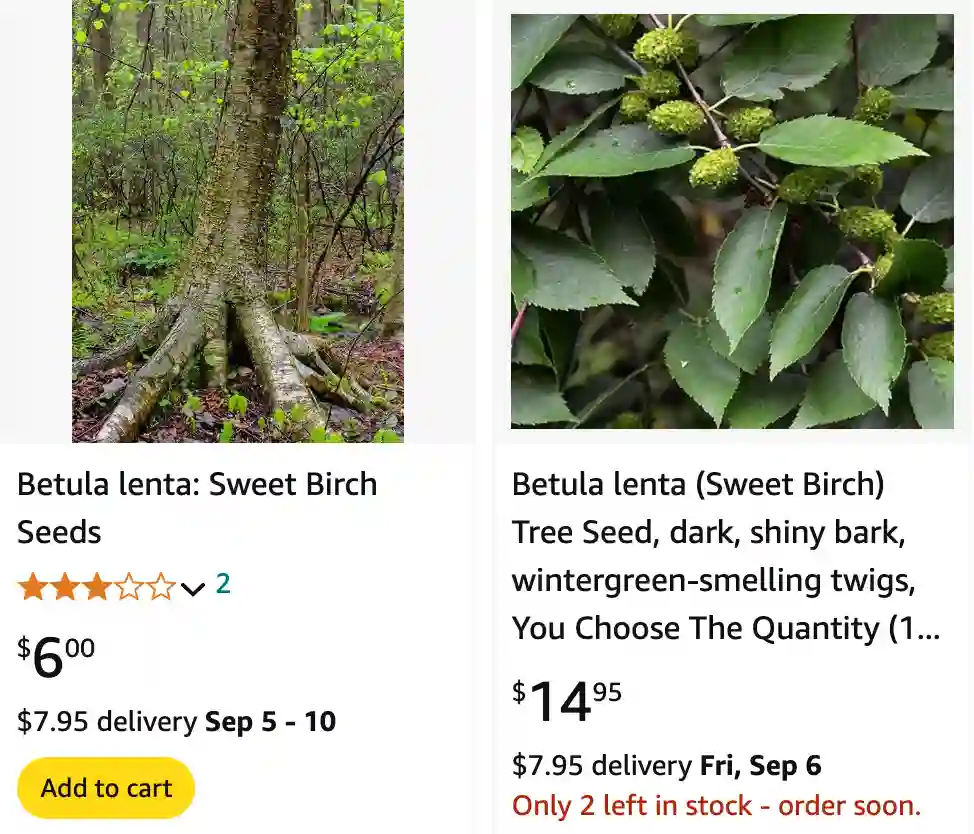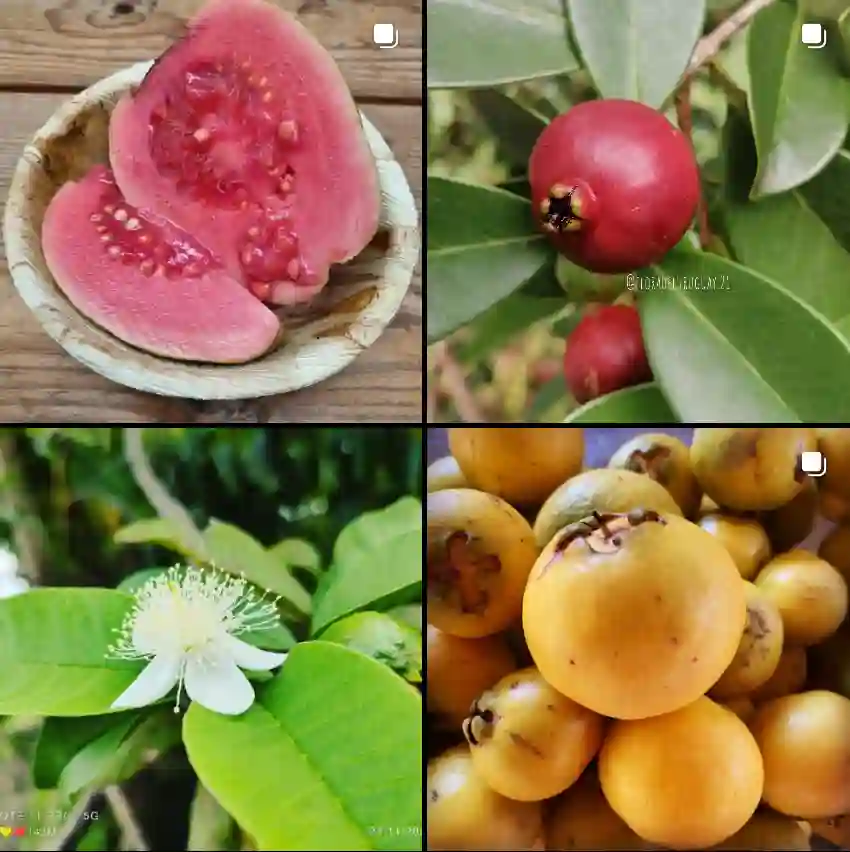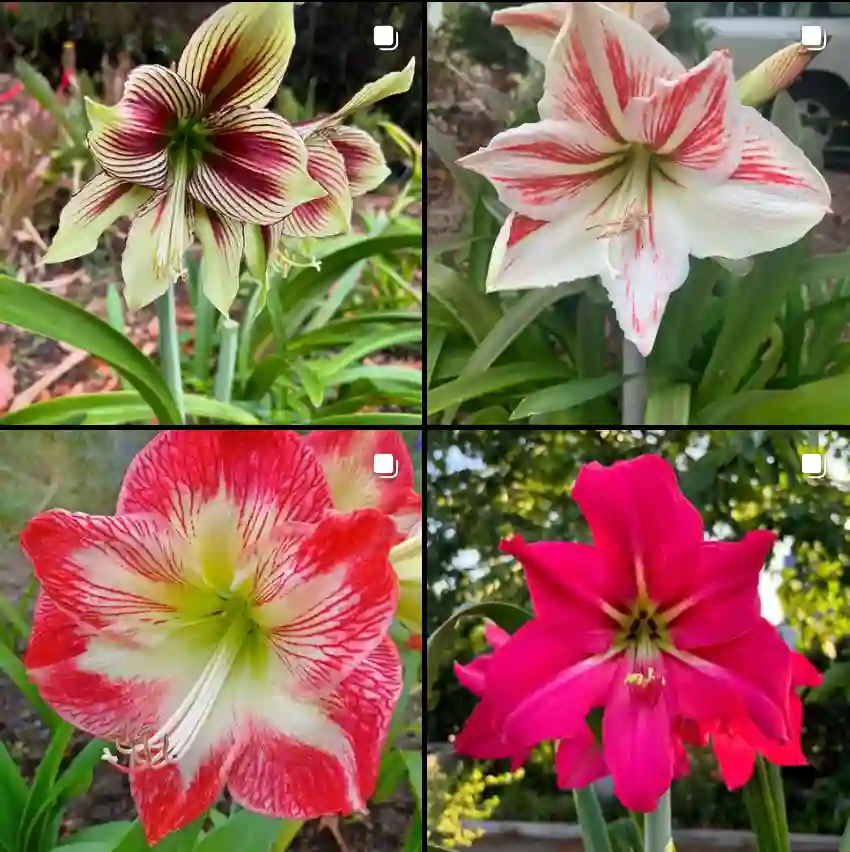
What is Betula Lenta?
Betula Lenta, commonly known as Sweet Birch or Black Birch, is a deciduous tree species native to North America. It is known for its aromatic bark, which has a scent reminiscent of wintergreen. This scent is due to the presence of methyl salicylate, a compound that was historically used to produce oil of wintergreen. Betula Lenta is characterized by its dark, almost black bark, which develops horizontal lenticels (small openings) and becomes cracked as the tree ages. Its leaves are oval, with serrated edges, turning a beautiful yellow in the fall.
87 Species in Genus Betula – Birch Tree
What Country Does Betula Lenta Come From?
Betula Lenta is native to the United States. It primarily grows in the eastern part of the country, from southern Maine down to northern Georgia and Alabama. The tree thrives in the Appalachian region, where it finds the cool, moist conditions it prefers.
Where is Betula Lenta Found?
In addition to its presence in the Appalachian Mountains, Betula Lenta can be found in other parts of eastern North America. It grows well in well-drained, loamy soils and is commonly found in mixed hardwood forests. The tree prefers shaded areas but can also grow in full sun. Its habitat often includes hillsides and mountain slopes, where the soil remains consistently moist but not waterlogged.
Betula Lenta vs Betula Alleghaniensis
Betula Lenta and Betula Alleghaniensis (Yellow Birch) are often confused due to their similar appearance and overlapping habitats. However, there are some key differences between the two. Betula Lenta has darker bark that tends to stay smooth longer, while Betula Alleghaniensis has bark that peels off in thin, curly strips, giving it a more ragged appearance. Additionally, Betula Alleghaniensis tends to grow taller, reaching heights of up to 100 feet, compared to Betula Lenta, which usually maxes out around 60 to 70 feet. The scent is another distinguishing factor—Betula Lenta’s bark emits a strong wintergreen aroma when scratched, which is much less pronounced in Betula Alleghaniensis.
Betula Lenta vs Prunus Serotina
Prunus Serotina, commonly known as Black Cherry, is another tree species that can be confused with Betula Lenta due to its dark bark. However, these two trees have distinct differences. The leaves of Prunus Serotina are glossy, dark green, and have fine serrations along the edges, whereas Betula Lenta’s leaves are more oval and less glossy. In terms of bark, Prunus Serotina has bark that breaks up into small, scaly plates, resembling burnt potato chips, while Betula Lenta has smoother bark with horizontal lenticels. Additionally, Prunus Serotina produces small, dark purple fruits that are edible, while Betula Lenta does not produce such fruit.
How to Care for Betula Lenta?
Betula Lenta is relatively low-maintenance once established, but it does have some specific care requirements. It prefers well-drained, slightly acidic soil and does best in areas with cool, moist climates. Regular watering is important, especially during dry periods, as the tree is not very drought-tolerant. Mulching around the base of the tree can help retain moisture and protect the roots. Pruning should be done in late winter or early spring to remove any dead or damaged branches.
How to Propagate Betula Lenta?
Propagating Betula Lenta can be done through seeds or cuttings. To grow from seeds, collect them in the fall and sow them in a cold frame or a prepared seedbed. The seeds require stratification, meaning they need a period of cold to germinate. For cuttings, take softwood cuttings in late spring or early summer. Dip the cut end in rooting hormone and plant it in a moist, well-drained potting mix. Keep the cuttings in a humid environment until roots develop.
Can You Grow Betula Lenta Indoors?
Betula Lenta is not well-suited for indoor growth due to its size and light requirements. The tree can reach significant heights and needs full to partial sunlight, making it difficult to accommodate indoors. It’s best planted in outdoor settings where it has room to grow and receive ample natural light.
Is Betula Lenta Toxic?
Betula Lenta is generally not considered toxic to humans or pets. However, the tree’s bark and leaves contain methyl salicylate, which, in large quantities, could be harmful if ingested. This compound is also a skin irritant for some people, so it’s advisable to handle the tree with care.
Benefits of Betula Lenta
Betula Lenta offers several benefits, both ecological and practical. The tree provides habitat and food for various wildlife species, including birds and small mammals. Its strong, durable wood is used for furniture, flooring, and cabinetry. Historically, the tree’s bark was a source of oil of wintergreen, used for medicinal purposes to relieve pain and inflammation.
Common Problems with Betula Lenta
Like many trees, Betula Lenta is susceptible to certain pests and diseases. One common issue is the bronze birch borer, an insect that can cause significant damage to the tree by boring into its bark and disrupting nutrient flow. Leaf spot diseases and aphids can also affect the tree, though they are generally less severe. Proper care, including regular watering and pruning, can help keep these problems at bay.
What to Plant with Betula Lenta?
Betula Lenta pairs well with other native woodland plants. Consider planting it alongside ferns, hostas, and shade-tolerant shrubs like rhododendrons and azaleas. These plants not only complement Betula Lenta aesthetically but also share similar growing conditions, making them ideal companions in a garden setting.
Betula Lenta is a fascinating tree with a rich history and many uses. Understanding its care needs, differences from similar species, and the benefits it offers can help you appreciate this tree even more. Whether you’re a seasoned gardener or a beginner, Betula Lenta can be a rewarding addition to your landscape.
If i die, water my plants!



